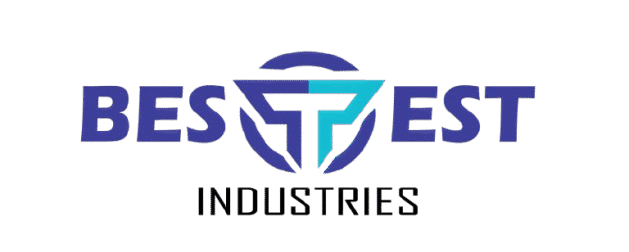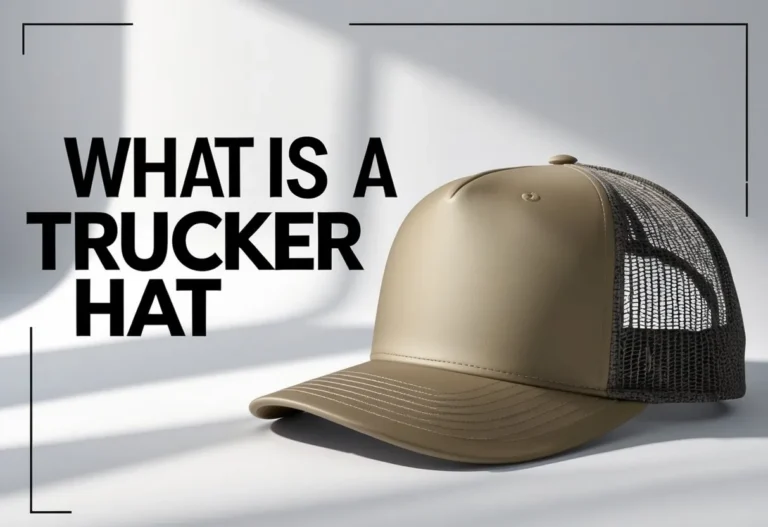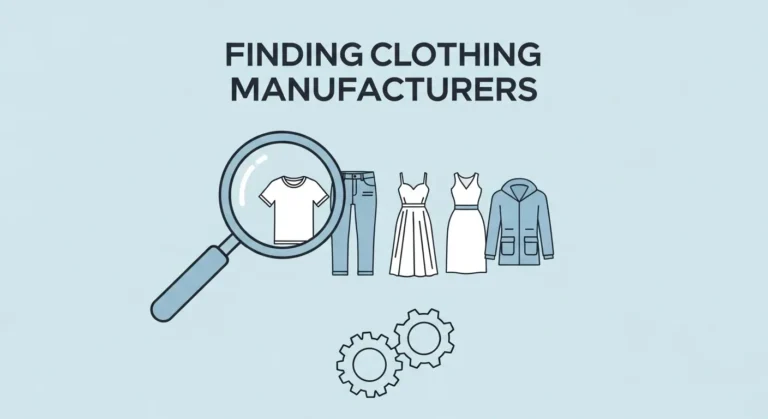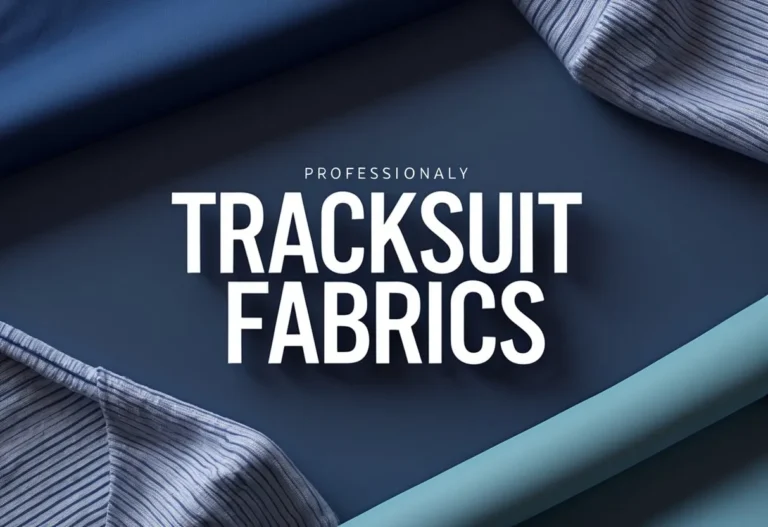How to Start a Hat Business: Build a Profitable Brand
How to start a hat business involves blending creativity with smart planning to create a profitable brand. It begins with understanding the market and deciding on a specific style or niche that meets customer needs. By researching trends and competitors, choosing the right hat styles, and creating unique designs, anyone can launch a hat business that stands out.

Building a brand and setting up an online store are essential steps to attract customers and grow sales. Reliable manufacturing and smooth order fulfillment ensure quality and customer satisfaction. Marketing through social media and other channels helps spread the word and build a loyal following.
Success comes from careful product selection, clear branding, and effective promotion. These steps create a strong foundation for turning a passion for hats into a thriving business.
Key Takeways
- Researching the market helps identify customer needs and opportunities.
- Choosing the right products and building a clear brand attracts buyers.
- Effective marketing and fulfillment support growth and customer trust.
Conduct Market Research for how to start a hat business

Market research helps understand who will buy the hats, what styles are popular, and where opportunities exist. It involves studying customers’ needs, current fashion trends, and gaps in the market to create hats that stand out. This process reduces risks and guides better business decisions.
Define Your Target Audience
Defining the target audience means identifying the specific group of people most likely to buy the hats. This includes factors like age, gender, lifestyle, and interests. For example, a custom hat business could target athletes, fashion-conscious teens, or outdoor workers.
Knowing the audience helps decide hat styles, materials, colors, and pricing. It also guides marketing strategies, such as social media platforms or events to reach potential buyers. A clear target audience ensures the business focuses its efforts where they matter most.
Analyze Market Trends
Analyzing market trends involves tracking current and emerging styles in hats and fashion accessories. This can include changes in popular hat types, materials (like sustainable fabrics), and color choices.
Staying updated on trends helps adjust designs to meet customer preferences. It also reveals seasonal patterns and areas of growing demand. For example, the rise of eco-friendly products may influence a hat business to adopt sustainable production methods.
Identify a Niche
Identifying a niche means finding a specific segment of the hat market with unmet needs or less competition. This could be hats for a particular sport, demographic, or style, such as vintage trucker hats or personalized embroidery.
Choosing a niche helps differentiate a brand and attracts loyal customers. It focuses resources on a targeted market rather than competing broadly. A well-chosen niche increases the chance of success in a competitive fashion accessories industry.
Choose Hat Styles and Products

Choosing the right hat styles and products is key to attracting and keeping customers. It involves picking popular and niche styles, offering customization options, and keeping up with what’s new in the market. This helps create a product lineup that fits the target audience and stands out.
Select Popular Hat Styles
Popular hat styles appeal to broad groups and are a good place to start. Baseball caps are timeless and suit many looks, from casual wear to branded merchandise. Snapbacks with flat brims and adjustable backs are favored by younger, streetwear-focused consumers.
Trucker hats are great for outdoor activities and casual fashion because of their mesh backs and breathable design. Dad hats offer a relaxed feel with unstructured shapes and simple logos popular with Gen Z. Bucket hats work well for summer and festivals, providing a trendy, laid-back style.
Beanies and visors target specific needs: beanies provide warmth for cold weather and space for detailed designs, while visors are practical for sun protection during sports. Offering a mix of these styles keeps the product range versatile and appealing.
Decide on Customization Options
Customization helps differentiate a hat brand. Options like embroidery, screen printing, and heat transfer add logos, text, or patterns to hats. Embroidery offers durability and a high-end look suitable for logos and simple images. Screen printing is cost-effective for large batches with bold colors, while heat transfer works well for detailed, colorful designs.
Providing color choices, adjustable closures, and fabric options enhances customization. Some businesses allow customers to upload their own designs, increasing engagement. Custom hat designs should fit the brand’s style and meet customer expectations for quality.
Offering different levels of customization, from basic color changes to fully personalized hats, helps attract a broader market.
Research Emerging Trends
Staying aware of new trends keeps a hat business relevant. Personalization is growing, with shoppers wanting unique, made-for-them products. Sustainable materials, like recycled fabrics, are also gaining popularity, appealing to eco-conscious buyers.
Styles shift often; current trends include vintage-inspired designs, minimalist logos, and bold graphics. Seasonal trends matter too, such as lighter fabrics for summer bucket hats or cozy knit beanies for winter.
Using social media and trend tools can help track which hat styles and designs gain traction. Supporting emerging preferences allows the business to adapt quickly and satisfy changing customer demands.
Develop Your Brand Identity for how to start a hat business

Developing a strong brand identity helps a hat business stand out and connect with customers. It involves choosing a memorable name, crafting visual elements like logos, and defining what makes the business unique. Each part works together to build trust and make the brand recognizable.
Create a Memorable Brand Name
The brand name is the first thing customers notice. It should be easy to remember, spell, and pronounce. The name should reflect the style and target market of the hat company—for example, a sporty name for athletic hats or a classy name for high-end fashion hats.
Consider using words related to hats, fashion, or the feeling the brand wants to create. Avoid names that limit future growth by being too specific. Check availability for domain names and social media handles to keep branding consistent online.
Design a Logo and Visual Elements
A logo creates an instant visual connection with the brand. It should be simple, adaptable for various uses, and relevant to the hat business. Colors and fonts chosen for the logo need to match the brand’s personality—bold colors for streetwear or soft tones for eco-friendly hats.
Visual elements like packaging, labels, and website design should follow the same style to maintain a uniform look. This consistency helps customers recognize the brand quickly and builds professionalism.
Establish Your Unique Selling Proposition
A Unique Selling Proposition (USP) shows what sets the hat brand apart. It might be eco-friendly materials, custom designs, or a focus on a niche market like trucker hats or baseball caps. The USP explains why customers should choose this hat company instead of others.
The USP should be clear and appear in marketing messages, product descriptions, and branding. A strong USP builds customer loyalty and gives the business a clear direction when designing and marketing hats.
Set Up Your Online Store for how to start a hat business

Setting up an online store involves selecting the right platform, creating clear product listings, and ensuring smooth payment options. Each step helps make the store easy to use and builds trust with customers.
Choose Ecommerce Platforms
Choosing an ecommerce platform depends on the type of hat business and technical skills available. Popular choices include Shopify, Wix, and WooCommerce. Shopify is ideal for those wanting a quick setup with built-in marketing tools. Wix offers easy design customization for smaller catalogs. WooCommerce is a plugin for WordPress, suited for those needing full control and flexibility.
Marketplaces like Etsy, Amazon, and eBay provide access to ready customers but often charge fees and limit branding options. Newer options like TikTok Shop allow direct selling through social media, which works well for brands targeting younger buyers.
Choosing the right platform means balancing control, cost, and customer reach.
Optimize Product Listings
Optimizing product listings is essential to attract buyers and improve search visibility. Each listing should include high-quality photos showing the hats from multiple angles. Use natural lighting and show the product being worn when possible.
Product descriptions must be clear and include details such as material, size, color options, and care instructions. Key phrases like “custom dad hats” or “embroidered snapbacks” should be included naturally to boost SEO.
Other helpful features include size charts, customer reviews, and related product recommendations. These elements build confidence and can increase average order value.
Integrate Payment Solutions
Integrating reliable payment solutions is critical for smooth sales. Most ecommerce platforms support multiple payment gateways like PayPal, Stripe, and credit card processing. Offering several payment options reduces checkout friction and lowers cart abandonment.
Security is vital. The online store must use SSL encryption to protect customer data during transactions. Transparent refund and privacy policies also build trust.
Some platforms, like Shopify, provide built-in payment systems that simplify setup. Others may require manual integration but offer wider flexibility for international sales.
Offering both convenience and security is key to handling payments effectively.
Source and Fulfill Orders

Choosing the right method to source and fulfill orders affects costs, delivery times, and customer satisfaction. Each option has different benefits depending on inventory control, startup budget, and business goals. Effective order fulfillment balances quality, speed, and scalability.
Choose Print-on-Demand Services
Print-on-demand (POD) services let businesses design hats and sell them without upfront inventory. When a customer orders, the POD provider prints and ships the hat directly. This approach minimizes financial risk and storage needs.
Many POD platforms include mockup generators, allowing sellers to create product images quickly. Integration with online stores such as Shopify or Etsy simplifies sales and order management. However, POD has lower profit margins compared to bulk manufacturing due to higher per-item costs.
It suits entrepreneurs focusing on customizable designs and testing market reactions. Careful selection of a POD provider is important—consider print quality, shipping speed, and customer service to maintain brand reputation.
Compare Third-Party Suppliers
Third-party suppliers manufacture hats either as blanks or customized products. Entrepreneurs can buy in bulk and store inventory or outsource fulfillment. This method allows better control over material quality and design features.
Third-party suppliers vary widely. Some offer private labeling, embroidery, or unique hat materials. Evaluating suppliers involves checking minimum order quantities, pricing, sample quality, and reliability.
Using established suppliers can improve consistency but requires upfront investment and inventory management. For faster scaling, businesses might outsource fulfillment to warehouses or third-party logistics providers who handle packing and shipping.
Consider Dropshipping Options
Dropshipping lets entrepreneurs sell hats without handling stock. Once an order is placed, the supplier ships directly to the customer. Dropshipping reduces startup costs and simplifies logistics.
Dropshipping suppliers often offer a wide range of products, including various hat styles and custom options. Sellers must research suppliers’ shipping times and return policies to avoid customer service issues.
While dropshipping reduces overhead, it limits control over inventory and packaging. Profit margins can be tight, so pricing and marketing strategy play key roles in success. Dropshipping works well for sellers prioritizing low-risk entry and flexible product testing.
Promote and Market Your Hat Business

Marketing is essential to reach customers and grow sales. Effective promotion includes using online tools and strategies that connect with your target buyers and highlight your brand’s unique style.
Leverage Social Media Platforms
Social media platforms like Instagram, Facebook, and TikTok are powerful tools for promoting hats. Visual content performs well here, so sharing high-quality photos and videos of products is key. Posting consistently builds brand recognition and customer trust.
Using features like Instagram Stories or Facebook Shops helps showcase new designs and offers. Engaging with followers by replying to comments and messages encourages loyalty. Hashtags related to hat styles and trends increase the chance of discovery by potential customers.
Analytics tools on these platforms let businesses track what posts work best. They can adjust content based on audience preferences to improve engagement and sales.
Implement Influencer Marketing
Partnering with influencers helps reach niche audiences quickly. Influencers with followers interested in fashion or accessories can wear and promote hats. This shows real-world use and builds credibility.
Choose influencers whose style fits the brand and whose followers match the target market. Micro-influencers, with smaller but highly engaged audiences, often offer better ROI than celebrities.
Clear agreements on deliverables, like posts or videos, define expectations. Tracking promo codes or links given to influencers measures the success of campaigns. Influencer marketing can increase brand awareness and drive direct sales if done strategically.
Launch Paid Advertising Campaigns
Paid advertising on Facebook Ads and Google Ads targets specific customer groups by age, location, interests, and behavior. This precise targeting helps focus the budget on likely buyers.
Facebook Ads allow for creative ad formats like carousels or videos to display different hat styles. Google Ads use search keywords to show ads when people look for hats or related products online.
Setting a clear budget and goals before launching ads prevents overspending. Monitoring ad performance daily lets businesses stop or adjust ads that don’t perform. Successful campaigns usually combine strong visuals, clear calls to action, and landing pages optimized to close sales.
Build an Email Marketing Strategy
Email marketing keeps customers informed and encourages repeat purchases. Building a mailing list through sign-ups on the website or after purchases is the first step.
Regular newsletters with new hat releases, exclusive discounts, or style tips keep the audience engaged. Personalization, like addressing customers by name and tailoring recommendations, improves open rates and clicks.
Segmenting the list by customer preferences or past purchases allows sending relevant offers. Including clear calls to action and mobile-friendly design ensures better engagement.
Tracking metrics such as open rates and conversions helps refine content and scheduling for future emails.
Frequently Asked Questions
how to start a hat business requires clear steps, thoughtful budgeting, and choosing the right workspace. Success often depends on smart marketing, effective branding, and having the necessary tools for production.
What are the steps how to start a hat business from scratch?
First, conduct market research to identify target customers and trends. Next, choose a niche that fits a specific audience or style. Then, design or source your hat products.
After that, set up sales channels like an online store or marketplaces. Finally, focus on marketing your brand and managing order fulfillment.
How can you establish a hat business with a limited budget?
Start by using print-on-demand services to avoid upfront inventory costs. Create a small product line to test the market before scaling. Use social media marketing to promote your brand without big ad expenses.
DIY design tools or hiring freelance designers on platforms like Fiverr can reduce costs. Focus on platforms with low fees to keep expenses manageable.
What are the essentials for starting a hat business at home?
A reliable computer and internet connection are essential for designing and managing sales. A small workspace for packaging and quality checks is needed. Access to printing or embroidery partners or equipment is important for customization.
Home-based businesses benefit from using online platforms for selling, customer communication, and marketing.
Can you achieve profitability with an online hat business and how?
Profitability comes from low production costs, smart pricing, and reaching the right audience. Using e-commerce platforms like Shopify allows brand control and direct sales. Combining online marketplaces and social media shops expands reach.
Building a brand story and unique designs helps justify price points. Regularly analyzing sales data and customer feedback enables price and product adjustments.
What are some creative hat business names and branding tips?
Names should be easy to remember and reflect the brand’s style or niche. Using words related to hat types, fashion, or personal themes can work well. A strong logo and consistent colors across all platforms create recognition.
Developing a brand story that connects emotionally with customers promotes loyalty. Keeping branding consistent in packaging, website, and marketing material is key.
What equipment is necessary for how to start a hat business embroidery operation?
An embroidery machine suitable for hats is required. This includes a hoop system that fits curved hat brims. Computers with software for design digitizing are important to create embroidery files.
Other essentials include threads, stabilizers, and quality control tools. A clean, organized workspace helps maintain production efficiency.





